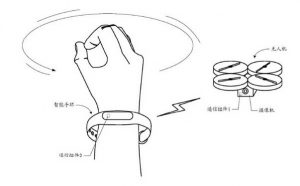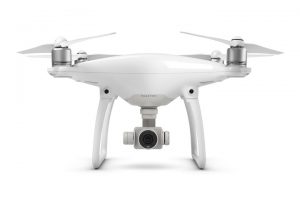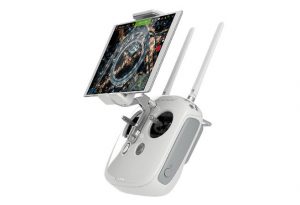Some two years ago, Hubsan released the X4 H107D. It became the world’s smallest FPV toy quadcopter to feature 5.8GHz video, quickly turning into a novelty as other manufacturers continued to favor the less reliable WiFi FPV due to lower costs.
This made the X4 H107D the only true blue micro FPV drone in the market at the time. Although way more advanced than its rivals, it was sold at an exorbitant price which put it beyond the reach of many enthusiasts.
Now, things are getting a little bit more exciting in the micro 5.8GHz FPV market.
Enter the WLToys Q242G — the latest and currently most affordable micro 5.8GHz FPV quadcopter around. Priced at just $81 at GearBest.com, the Q242G is about half the price of Hubsan’s latest X4 H107D+ Plus — successor of the H107D. Although the Q242G is no match for the H107D+ in terms of features, it certainly comes close.
In fact, it’s very similar to the earlier H107D in terms of specifications. The Q242 also comes in a cheaper WiFi variant — the Q242K, priced at $58.48.
Specifications
- Dimensions: 80 x 80 x 40mm
- Diagonal motor distance: 95mm
- Motor size: 8.5mm
- Weight: 52g (with battery and camera)
- Flight time: 5 to 8 minutes
- Battery: 3.7V 400mAh Li Po
- Charging time: approximately 60 minutes
- Control distance: 30 to 50m
- Transmitter power: 3.7V 500mAh (removable)
On the surface, the Q242G looks really good. It has a sleek body with a matte black finish that looks like a scaled-down version of the Walkera Scout X4. At the bottom of each motor are spiky landing legs made of silicone which do a good job in absorbing impact during hard landings. They are, however, a bit too bouncy and if your Q242G comes down hard on the ground, it may just flip over.
The Q242G’s propulsion is handled by 8.5mm motors paired to 55mm blades — a powerful combination considering the size of this micro quad. Perhaps one of the most impressive features of the Q242G is its battery which employs a push-to-install design similar to what you’ll find on smart batteries used on more expensive drones such as the Phantom 3.
To install the battery, simply slide it into the battery compartment at the rear until it clicks. To remove the battery, press on the mini latch and pull the battery out. The Q242G’s battery is a very neat aspect of its design and gives it a premium look and feel.
However, there is one thing conspicuously missing on the Q242G — a power switch.
Transmitter
In my opinion, the most impressive feature of the Q242G is not the quad itself but the transmitter. It’s quite rare to come across a transmitter this good-looking in sub-$100 toy quadcopters. The Q242G’s transmitter has a premium look and feel to it and you’d be forgiven to think that it came with a quadcopter that cost twice as much.
Taking center stage on the transmitter is a 5-inch display with collapsible sunshade that does an excellent job in shielding the display even when it is really bright outdoors.
The transmitter has rubberized grips for both hands which feel really good. At the front is the power switch and the various trim buttons. At the rear is the spacious battery compartment which houses a 3.7V 500mAh battery with a JST connector which provides just enough power for about 2 to 3 FPV flights. This is probably not enough for most people but fret not for the battery compartment is large enough to take batteries that are at least twice the capacity.
Considering that the 5″ display takes up a lot of power, I’m surprised that WLToys did not provide a power switch for it. If you intend to fly the Q242G without looking at the FPV screen or if you plan to fly it with a pair of FPV goggles, there is no way to turn the display off.
Overall, despite this flaw, I’d still give WLToys two thumbs up for providing such a cool transmitter with a sub-$100 toy quadcopter.
FPV Performance
The Q242G comes with a 2MP camera with built-in 5.8GHz FPV transmitter which is the key selling point of this toy quadcopter. Unlike other toy drones that use WiFi for their FPV video downlinks, the Q242G’s FPV transmission does not suffer from horribly slow latency.
Optical quality of the 2MP camera is reasonably good and is what you’d expect from a toy-grade product. One thing that I’d like to highlight is the Q242G’s built-in micro SD card slot which lets you record videos and photos on the drone instead of on your smartphone or FPV display — which is the method used by many other toy drones in the market today. This approach is by far the better way of doing it since recording your camera files on a remote device is a method that is susceptible to all kinds of problems such as signal interference and lags.
The WLToys Q242G has a built-in 5.8GHz FPV transmitter.
The FPV range, with the supplied FPV monitor, can reach up to 100m without obstructions. However, there is some flickering that starts at around 30 to 40m. This flickering gets worse as the distance increases and is probably due to poor signal reception in the FPV monitor itself and a puny low power FPV transmitter on the quad. With a hobby-grade 5.8GHz receiver on a separate monitor, I was able to get flicker-free reception up to 100m. The problem with signal interference at such distances isn’t really a big issue. Being such a small micro quad, you wouldn’t want to fly the Q242G further than 40m anyway.
The camera’s only drawback, in my opinion, is its narrow field of view (FOV). This narrow FOV may not be a problem to some people but if you intend to fly the Q242G in tight spaces such as a small apartment, the narrow FOV can make it very challenging.
With a narrow FOV and flying purely on FPV, you can’t see what’s on the left or right of your drone, making it extremely difficult to estimate the clearance that you have around unless you happen to be a very talented drone pilot.
Having said that, the Q242G is very much at home in open wide spaces such as a soccer field. As long as there is a lot of space to maneuver, the narrow FOV will not be an issue.
Flight Performance
As mentioned earlier, the Q242G comes with an impressive motor and propeller combination that provides it with some serious propulsion. In the air, the Q242G feels very planted and stable with its 8.5mm motors providing plenty of thrust when needed. Where speed and power is concerned, the Q242G simply blows away most other drones in its size category with the exception of micro drag racers such as the UDI U841.
Aerial flips are also swift and impressive and the Q242G is able to recover very quickly from each flip.
Having such powerful motors isn’t without its flaws. The motors are so powerful that they can twist, mangle or even rip off the propellers during a crash, especially when you forget to throttle down so be careful when flying in tight spaces with plenty of obstacles around.
Three speed modes are available on the Q242G and they can be toggled via the left shoulder button on the transmitter. There is no visual indicator of which speed mode you’re in. Pressing the left shoulder button will result in beeps which tells you which mode you’re in. One beep indicates speed mode 1 while 2 beeps indicate speed mode 2 and so on.
Detaching Propellers
After several dozen flights with the Q242G I began to realize its biggest and most serious flaw — the protruding plastic tops of its motor enclosures. Due to these protruding tops, the propellers cannot be fully plunged into their motor shafts, causing them to detach in mid flight.
This problem did not come to light during the first few flights. It was only on the 7th or 8th flight that I witnessed a propeller detaching itself in the air. From then onwards, without fail, at least one or two propellers will detach in mid air at every flight. A quick search online revealed no other Q242G users facing the same issue although I did find a review video of one relatively new Q242G detaching a propeller in mid air.
I’m not sure if this is a quality control issue that affects only my copy of the Q242G or if it affects every single one out there but those protruding tops certainly give a clue as to why this is even happening. The motors and props on the Q242G are identical to the ones on my UDI U841 which has never detached a propeller in mid air. The motor shaft lengths and diameter, when measured with a vernier caliper, are also identical on both quads. However, while the shafts on the U841 can be fully plunged into the propellers, the shafts on the Q242G stop short at about 1 or 2mm due to the protruding plastic cover.
I have tried using new propellers on my Q242G and even swapped with the spare ones meant for the U841 but the problem still persists.
If the protruding plastic tops are indeed the cause of this problem, then WLToys should take note and remove them immediately from the design. For all Q242G owners who are facing this problem, I think the only solution would be to take a sharp blade and just slice off the extra plastic so the shafts can be fully plunged into the propellers.
Conclusion
Although the WLToys Q242G is a fantastic introduction to true FPV flying for anyone on a tight budget, it is a mixed bag of sorts. Priced at just $81, it provides the same FPV experience as what you’d get on a 250-size 5.8GHz FPV racer, albeit on a much smaller scale. However, its propellers are not secured properly due to a design flaw which can lead to plenty of crashes and missing propellers. Imagine losing 55mm propellers in a field with thick grass and you get the idea.
The transmitter comes with a built-in 5″ FPV display with collapsible sun shade. It looks great, feels like a premium product and is a joy to use. The only issue I have with it is the lack of a power switch to turn off the display screen. The camera’s narrow FOV (Field of View) is also something that I’m not a fan of.
If the 5″ display isn’t enough, you can even fly the Q242G using any 5.8GHz FPV goggles for a more immersive flying experience. If you plan to use FPV goggles, do take note that the Q242G uses a random FPV channel every time you turn it on.
At press time the Hubsan X4 H107D retails for $132, making the Q242G (costing $81) an attractive alternative, price-wise. However, due to the serious design flaw which causes propellers to detach themselves in mid flight, I’m not sure if the Q242G is a wise option for those looking to experience 5.8GHz FPV flying on a micro scale.
If you’re bent on getting one, there is still hope in making it reliable — simply slice off the protruding plastic and this may just solve the problem.
Alternatively, you can also consider the newer and pricier Hubsan X4 H107D+ which comes with altitude hold.
The WLToys Q242G is available at GearBest for $81.
UPDATE (3/8/2016): It seems WLToys has updated the latest batches of Q242G with a much wider gap for their motor enclosures, allowing the props to be fully plunged in. Detaching props are no longer an issue thanks to this update. After flying at least two units of Q242G over a few dozen flights, I have yet to witness brand new props detaching on their own. The ratings for this drone have been updated to reflect the latest changes.


